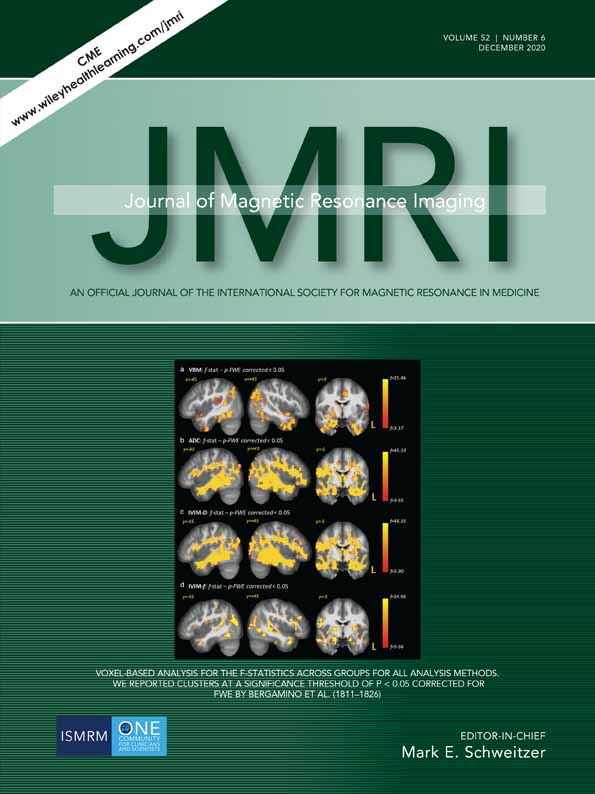Radiomic Analysis of Native T1 Mapping Images Discriminates Between MYH7 and MYBPC3-Related Hypertrophic Cardiomyopathy
Abstract
Background
The phenotype via conventional cardiac MRI analysis of MYH7 (β-myosin heavy chain)- and MYBPC3 (β-myosin-binding protein C)-associated hypertrophic cardiomyopathy (HCM) groups is similar. Few studies exist on the genotypic–phenotypic association as assessed by machine learning in HCM patients.
Purpose
To explore the phenotypic differences based on radiomics analysis of T1 mapping images between MYH7 and MYBPC3-associated HCM subgroups.
Study Type
Prospective observational study.
Subjects
In all, 102 HCM patients with pathogenic, or likely pathogenic mutation, in MYH7 (n = 68) or MYBPC3 (n = 34) genes.
Field Strength/Sequence
Cardiac MRI was performed at 3.0T with balanced steady-state free precession (bSSFP), phase-sensitive inversion recovery (PSIR) late gadolinium enhancement (LGE), and modified Look–Locker inversion recovery (MOLLI) T1 mapping sequences.
Assessment
All patients underwent next-generation sequencing and Sanger genetic sequencing. Left ventricular native T1 and LGE were analyzed. One hundred and fifty-seven radiomic features were extracted and modeled using a support vector machine (SVM) combined with principal component analysis (PCA). Each subgroup was randomly split 4:1 (feature selection / test validation).
Statistical Tests
Mann–Whitney U-tests and Student's t-tests were performed to assess differences between subgroups. A receiver operating characteristic (ROC) curve was used to assess the model's ability to stratify patients based on radiomic features.
Results
There were no significant differences between MYH7- and MYBPC3-associated HCM subgroups based on traditional native T1 values (global, basal, and middle short-axis slice native T1; P = 0.760, 0.914, and 0.178, respectively). However, the SVM model combined with PCA achieved an accuracy and area under the curve (AUC) of 92.0% and 0.968 (95% confidence interval [CI]: 0.968–0.971), respectively. For the test validation dataset, the accuracy and AUC were 85.5% and 0.886 (95% CI: 0.881–0.901), respectively.
Data Conclusion
Radiomic analysis of native T1 mapping images may be able to discriminate between MYH7- and MYBPC3-associated HCM patients, exceeding the performance of conventional native T1 values.
Level of Evidence
3
Technical Efficacy Stage
2 J. MAGN. RESON. IMAGING 2020;52:1714–1721.
Conflict of Interest
All authors declare that they have no competing interests regarding this study.




